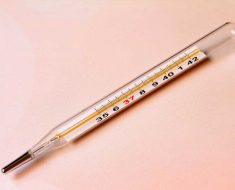Whenever the skin is broken, there is a risk of infection, scarring, allergies, or other skin problems.
In this article, we look at the causes and symptoms of piercing rejection, and how to stop it from happening.
What causes piercing rejection?

Sometimes, the body’s immune response sees the jewelry as a foreign object and rejects it.
Piercing rejection can cause discomfort and scarring.
The following can help reduce the risk of piercing rejection:
- choosing a qualified and experienced piercer
- using proper jewelry
- practicing proper piercing aftercare
Anyone who has piercings should keep a careful eye on them while they heal. Catching a piercing rejection early can reduce scarring or damage to the skin.

Any piercing has the potential to be rejected. Rejection depends on the person’s immune system and how well the piercing heals. But, the body tends to reject some types of piercings more often than others.
Surface piercings are the most common types of piercing to be rejected by the body. Surface piercings travel along an area of skin, rather than going directly through a body part. The jewelry punctures only a small amount of the skin’s surface.
Examples of surface piercings include eyebrows, neck, hip, and wrist.
Surface piercings may be prone to rejection just because it is easier for the body to push the jewelry out of a small amount of skin.
Non-surface piercings include the earlobe, ear cartilage, lip, or tongue. These types of piercings go all the way through the body tissue — in one side and out the other.
Non-surface piercings may be rejected less often because there is more tissue to hold them in place, making it more difficult for the body to push them out.

If the piercing appears to be migrating toward the surface, take the following steps:
- Remove the jewelry and contact the piercer. Keeping the jewelry in increases the chances of scarring. A large scar can prevent a person having a new piercing in the same location after it heals.
- Ask the piercer about using a different piece of jewelry. Thicker-gauge jewelry or a different shape or material may help the piercing heal and settle into place better.
- Do not try to treat the rejection at home with bandages or coverings. This may slow healing and has not been shown to help keep piercings in place.

Outlook
Most people who experience a piercing rejection will recover without any lasting health issues. However, there may be scarring, which can range from mild to severe.
Scarring can make it difficult or impossible to get a new piercing in the same location. It may also be a cosmetic concern. People who are prone to raised or keloid scars are generally advised to avoid piercings.
Antibiotics may be needed if an infection occurs. Anyone who suspects a piercing infection should discuss it with a doctor.
Signs of infection include the following at the piercing location:
- redness
- hot to the touch
- swelling
- discharge
With proper antibiotic treatment, most piercing infections heal without long-term problems.
After a piercing rejection, people should think about what may have caused it. Did they follow proper aftercare instructions? Did the piercer use appropriate equipment, technique, and jewelry?
If the piercing was done correctly and the person looked after it properly, the rejection may just be bad luck. A person can sometimes have one rejection then have no problems with future piercings. People should consider the risk of another piercing rejection before getting pierced again.
Source: Read Full Article





